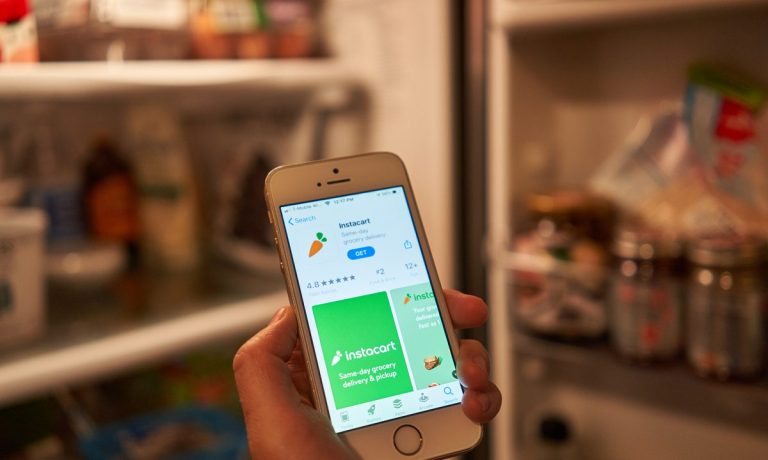
As grocery delivery services struggle to make the model profitable, Instacart is supplementing its revenue with expansions to its advertising business
On Thursday (May 26), the company announced two new offerings for advertisers: shoppable videos and an updated version of its shoppable display ads.
“Advertisers choose Instacart because we’ve built a platform with high-intent consumers, unparalleled scale of retailers, and closed-looped measurement, all of which drives meaningful results for our brand partners,” the company’s Ali Miller, vice president of Ads Product, said in a statement. “We designed our new shoppable ad products to create more brand storytelling opportunities for CPGs, help them inspire and reach new and existing consumers, and ultimately drive sales in a singular unit.
Throughout 2022, the aggregator has been growing its ad sales business. In February, Instacart announced that it is partnering with London-based multinational advertising and communications company WPP to offer advertising solutions and analytics tools to consumer-packaged goods (CPG) brands on its marketplace. In January, the company announced a new suite of marketing products for brands including branded pages and new display ads.
Related news: Instacart Partners With WPP to Supplement Delivery Revenue With Ad Sales
The aggregator has a wide reach, especially with the higher-spending consumers so attractive to brands. Research from PYMNTS’ April study, “ConnectedEconomy™ Monthly Report: 3 Ways Consumers Are Dealing With Inflation,” which drew from a March survey of more than 2,800 U.S. adults, found that 10% of the population falls into the “living large” category of spending, spending more freely, with major purchases including big-ticket items. Of these, 58% used a same-day delivery aggregator such as Instacart on a regular basis
Read more: 6 in 10 Consumers Buying Only the Essentials as Inflation Rises
In fact, Instacart’s reach with these big spenders far exceeds its reach with the population as a whole.
PYMNTS’ 2021 study “What Consumers Expect From Their Grocery Shopping Experience,” created in collaboration with ACI Worldwide, found that 34% of grocery shoppers are buying online, with 18% ranking the channel as their most preferred. However, only 2% of consumers ranked buying online using an aggregator that delivers the products the same day as their most-used purchasing method, while 11% reported using these aggregators overall.
See also: Digital Features Can Help Grocers Win Over 43% of Shoppers
Grocers ranging from to eGrocery startups to brick-and-mortar incumbents have been boosting their ad capabilities for eCommerce customers. Earlier this month, ultrafast grocery startup Jokr launched a service for advertisers to place digital ads in the company’s app and physical ads on drivers’ bags and within delivery orders. In March, Kroger announced that it is expanding access for advertisers through its retail media business, Kroger Precision Marketing, offering new digital ad placement capabilities.
Additional details: Rapid Food Delivery Businesses Pick up Advertising Side Hustle to Make Ends Meet
Kroger Boosts Digital Ad Business
These initiatives come as grocers, especially those in the ultrafast space, face significant challenges turning a profit. Grocery has always been an industry with narrow margins, and with the added costs of delivery, some players are losing money by the order. A January report found that these on-demand delivery services’ losses can amount to as much as $20 per order on average including ad spending. By offering advertising opportunities to brands, online grocery delivery businesses have the opportunity to bring in much-needed additional revenue, helping to improve the economics of the model.
You may also like: Rapid Food Delivery Businesses Pick up Advertising Side Hustle to Make Ends Meet